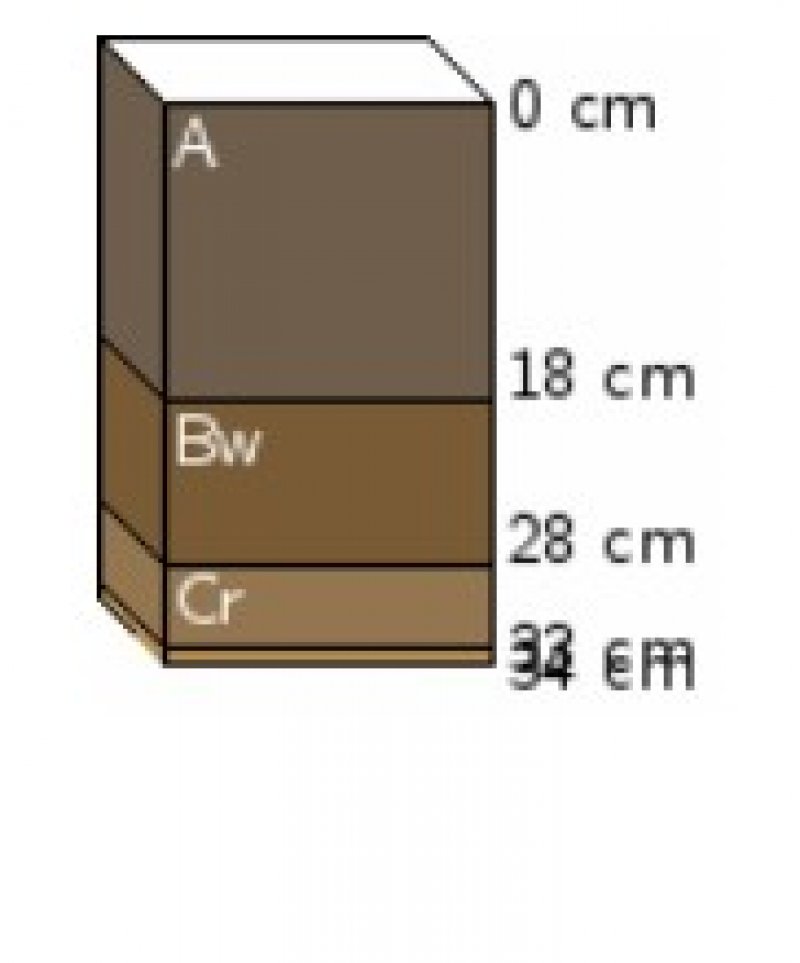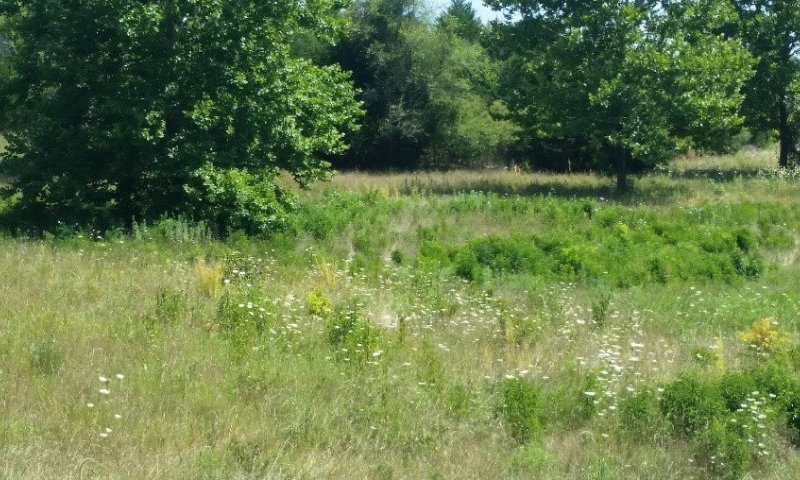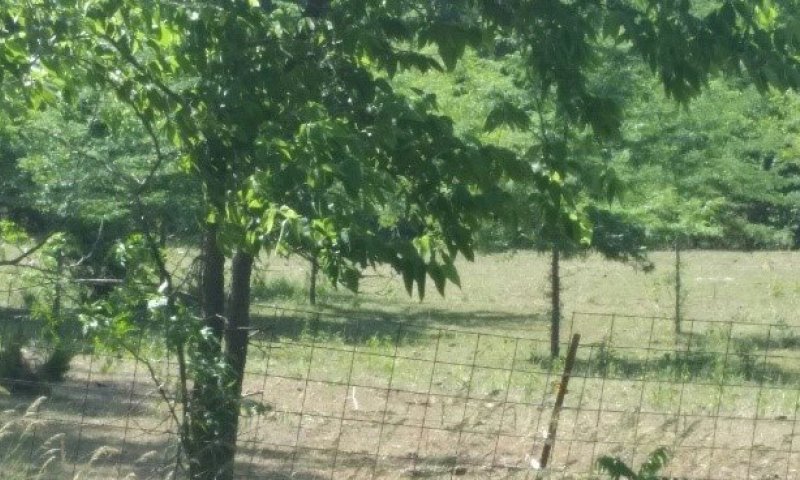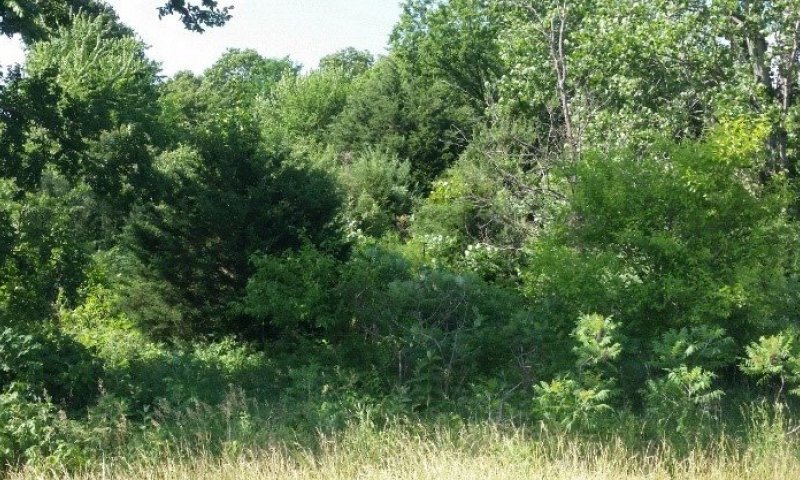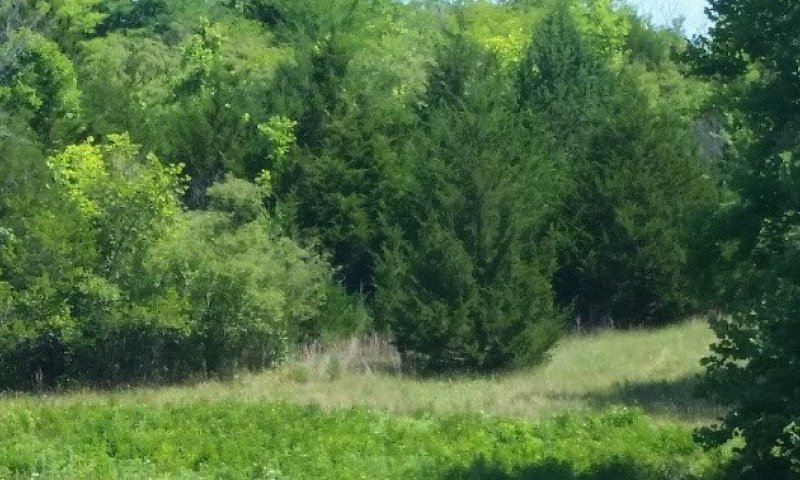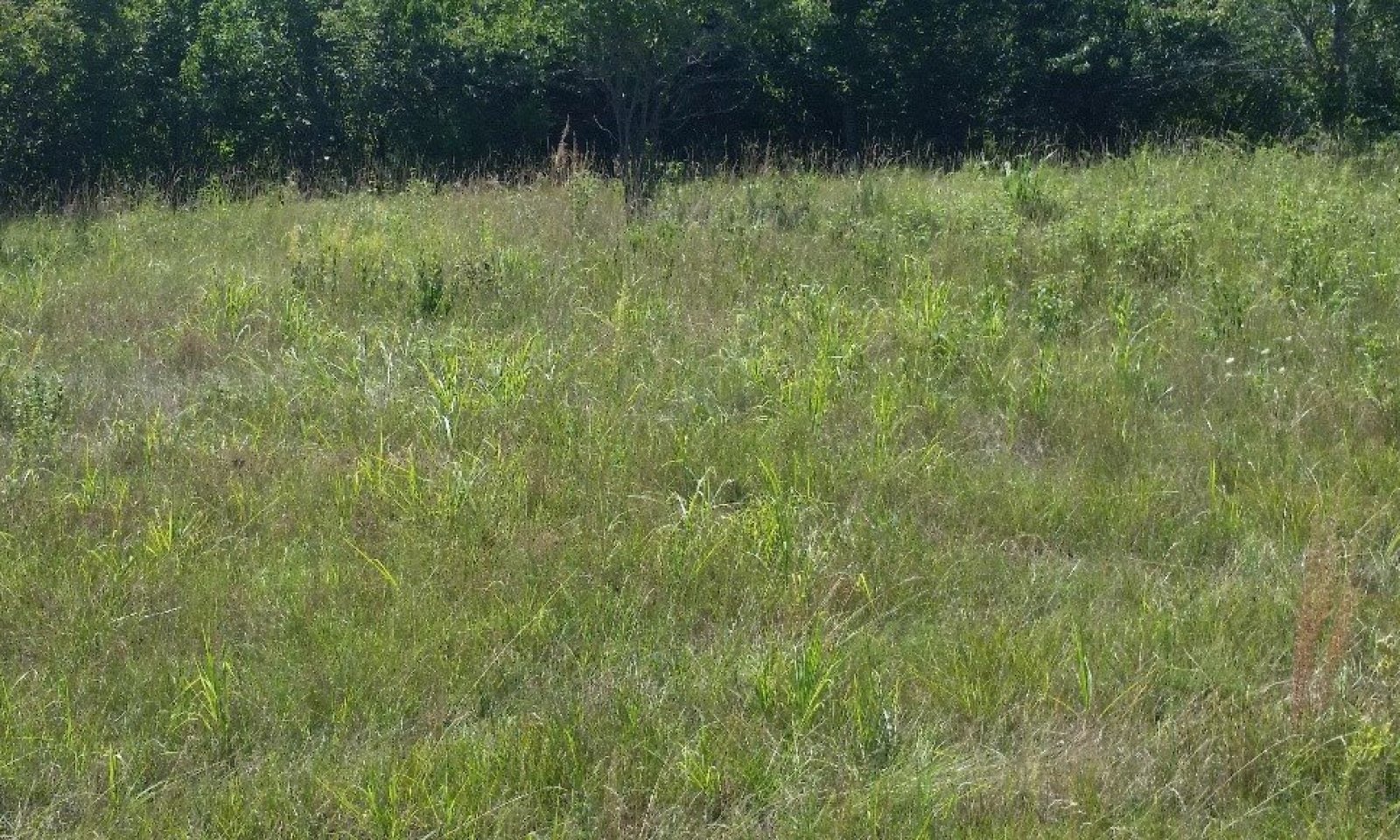

Natural Resources
Conservation Service
Ecological site R106XY031NE
Shallow Savannah
Last updated: 9/16/2019
Accessed: 11/24/2024
General information
Provisional. A provisional ecological site description has undergone quality control and quality assurance review. It contains a working state and transition model and enough information to identify the ecological site.
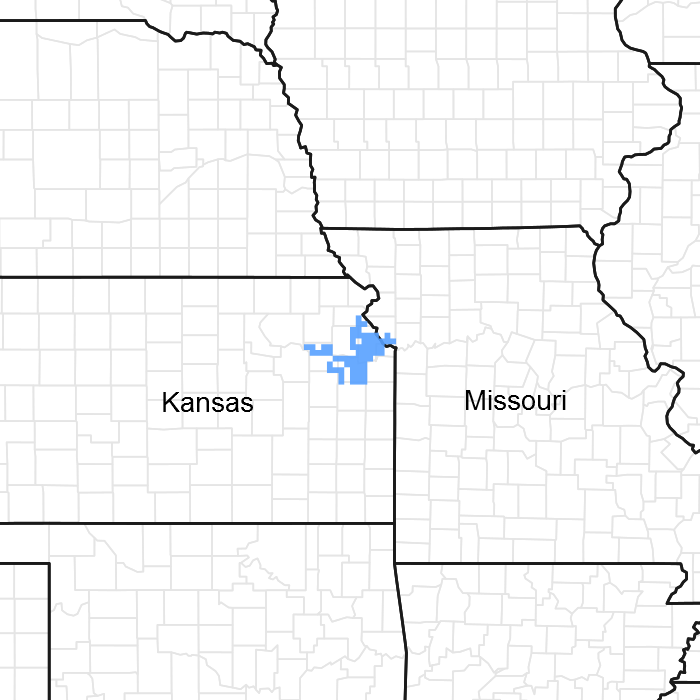
Figure 1. Mapped extent
Areas shown in blue indicate the maximum mapped extent of this ecological site. Other ecological sites likely occur within the highlighted areas. It is also possible for this ecological site to occur outside of highlighted areas if detailed soil survey has not been completed or recently updated.
MLRA notes
Major Land Resource Area (MLRA): 106X–Nebraska and Kansas Loess-Drift Hills
Named the “Nebraska and Kansas Loess-Drift Hills,” Major Land Resource Area (MLRA) 106 is divided almost evenly between southeastern Nebraska (52%), and northeastern Kansas, (48%). The northern border is located on the north end of Saunders County, Nebraska, and the MLRA stretches into Douglas County, Kansas in the south. The Nebraska cities of Beatrice and Lincoln are the major population centers in the north, while Topeka and Lawrence in Kansas are the primary cities in the south. The approximately seven million-acre landscape covers all or parts of 30 counties between the two states. This dissected glacial drift plain primarily consists of broad, smooth ridgetops, and slopes ranging from nearly level to steep. The elevation in MLRA 106 decreases from west to east, and ranges from nearly 1,650 feet to less than 790 feet above sea level. Stream valleys in this landscape are narrow and bordered by steep hills, with 10 to 20 feet of local relief. The river valleys are broader, and may drop up to over 160 feet below the adjacent hilltops. The Platte, Little Nemaha, and the North Fork of the Big Nemaha Rivers flow through the Nebraska side of the MLRA, while the Black Vermillion, the Soldier, and the Delaware Rivers are the major waterways on the Kansas side. The Big Blue River runs through both states, while The Salt Creek hydrologic system located near Lincoln, Nebraska provides habitat for the only known population of the Federally-listed endangered Tiger Salt Beetle.
The uplands are primarily comprised of glacial drift underlying a mantle of loess, while alluvial deposits are found in the stream and river valleys. Limestone and shale quarries are also located in MLRA 106. The predominant soil orders in this MLRA are mesic, udic, Mollisols, Alfisols, and Entisols. Loams and clays are the primary soil textures in this landscape.
Sixty-two percent of the land in this MLRA has been broken out of native prairie and farmed, while only 23 percent of the grasslands remain intact. Livestock grazing, primarily by cattle, is the main industry on these remnants. Corn, wheat, soybeans, and grain sorghum are the primary commodity crops, but a significant number of acres are also planted to alfalfa for harvest as hay.
With annual precipitation averaging from 40 inches in the southeast, to 28 inches in the northwest, irrigation for crop production is not a critical factor in most years.
The historical matrix vegetation type is Tallgrass Prairie, and big and little bluestem, switchgrass, Indiangrass, sideoats, and blue grama make up the bulk of the warm-season species; western wheatgrass is the dominant cool-season grass in the north, tall fescue is in the south. Large- and small-patch vegetative communities are found primarily along the riparian zones, and on both upland and lowland saline sites. Woodlands make up about six percent of MLRA 106, consisting primarily of green ash, oak, hackberry, boxelder, and maple trees.
Wildlife flourishes in this combination of crop and grassland environments. In a landscape historically occupied by bison herds, white-tailed deer are now the most abundant wild ungulates. A variety of smaller species, including coyote, raccoon, opossum, porcupines, muskrat, beaver, squirrel, and mink thrive in the region, as do several upland bird species. Native grassland bird populations are somewhat limited by the lack of contiguous native prairie and the fragmented habitat created by the farmland.
The rivers, streams, and lakes harbor excellent fisheries, and migrating and local waterfowl use the wetland complexes. These complexes provide ideal habitat for a number of wading and shore bird species as well.
This landscape serves as a backdrop for a disturbance-driven ecosystem, evolving under the influences of herbivory, fire, and variable climate. Historically, these processes created a heterogeneous mosaic of plant communities and structure heights across the region. Any given site in this landscape experienced fire every three to four years. The fires were caused by lightning strikes and also were set by Native Americans, who used fire for warfare, signaling, and to refresh the native grasses. The indigenous inhabitants understood the value of fire as a tool, and that the highly palatable growth following a fire provided excellent forage for their horses, and attracted grazing game animals such as bison and elk.
Land use patterns by post-European settlement have greatly altered the historical fire regime, allowing the expansion of the woody component. Introduction of eastern redcedar (ERC) as a windbreak species further facilitates invasion by this species.
While eastern redcedar is native to the landscape, the historic population in MLRA 106 was limited to isolated pockets in rugged river drainageways that were subsequently insulated from fire. Widespread plantings of windbreaks with eastern redcedar as a primary component have provided a seed source for the aggressive woody plant. The ensuing encroachment into the native grasslands degrades the native wildlife habit and causes significant forage loss for domestic livestock. However, since it is not a root-sprouter, eastern redcedar is very susceptible to fire when under six feet tall. Management with prescribed fire is exceedingly effective if applied before this stage.
Larger redcedars can also be controlled with fire, but successful application requires the use of specifically-designed ignition and holding techniques.
Fragmentation of the native grasslands by conversion to cropland, transportation corridors, and other developments have effectively disrupted the natural fire regime of this ecosystem. This has allowed encroachment by native and introduced shrubs and trees into the remnants of the native prairie throughout the MLRA. Aggressive fire suppression policies have exacerbated this process to the point that shrub and tree encroachment is a major ecological issue in the majority of both native and reseeded grasslands.
Classification relationships
Major Land Resource Area (MLRA): 106 Major Land Resource Area (MLRA) (USDA-Natural Resources Conservation Service, 2006)
General information for MLRA 106:
*Fenneman (1916) Physiographic Regions* Division – Interior Plains
Province – Central Lowland
Section – Dissected Till Plains
*USFS (2007) Ecoregions*
Domain – Humid Temperate
Division – Prairie
Province – Prairie Parkland (Temperate)
Section – Central Dissected Till Plains (251C)
*EPA Ecoregions (Omernik 1997)*
I – Great Plains (9)
II – Temperate Prairies (9.2)
III – Western Corn Belt Plains (9.2.3)
IV – Loess and Glacial Drift Hills (47i)
*Associated Counties*
Nebraska: Butler, Cass, Gage, Jefferson, Johnson, Lancaster, Nemaha, Otoe, Pawnee, Richardson, Saline, Saunders, Seward
Kansas: Atchison, Brown, Doniphan, Douglas, Franklin, Jackson, Jefferson, Johnson, Leavenworth, Marshall, Nemaha, Osage, Pottawatomie, Shawnee, Wabaunsee, Washington, Wyandotte
Ecological site concept
The Shallow Savannah site is an upland site occupying ridges and slopes. Tall- and Mid-grasses, and deciduous trees are the dominant reference community vegetation. The soils are shallow, and formed over sandstone or sandy shale. Vegetative production is less than that of the associated deeper soils.
Associated sites
| R106XY068NE |
Loamy Floodplain The Loamy Floodplain is a run-on site often positioned down slope of the Shallow Savannah site. |
|---|---|
| R106XY075NE |
Loamy Upland Loamy Upland is often located adjacent to the Shallow Savannah site. Loamy Upland has a deeper soil, a higher percentage of tallgrass species, and higher vegetative production. |
| R106XY077NE |
Shallow Limy The Shallow Limy site is often adjacent to the Shallow Savannah site. Shallow Limy is effervescent at or near the surface. |
Similar sites
| R106XY077NE |
Shallow Limy The Shallow Limy site is often adjacent to the Shallow Savannah site. Shallow Limy is effervescent at or near the surface. Shallow Savannah has a greater percentage of woody species in the reference community. |
|---|
Table 1. Dominant plant species
| Tree |
Not specified |
|---|---|
| Shrub |
Not specified |
| Herbaceous |
(1) Schizachyrium scoparium |
Click on box and path labels to scroll to the respective text.
